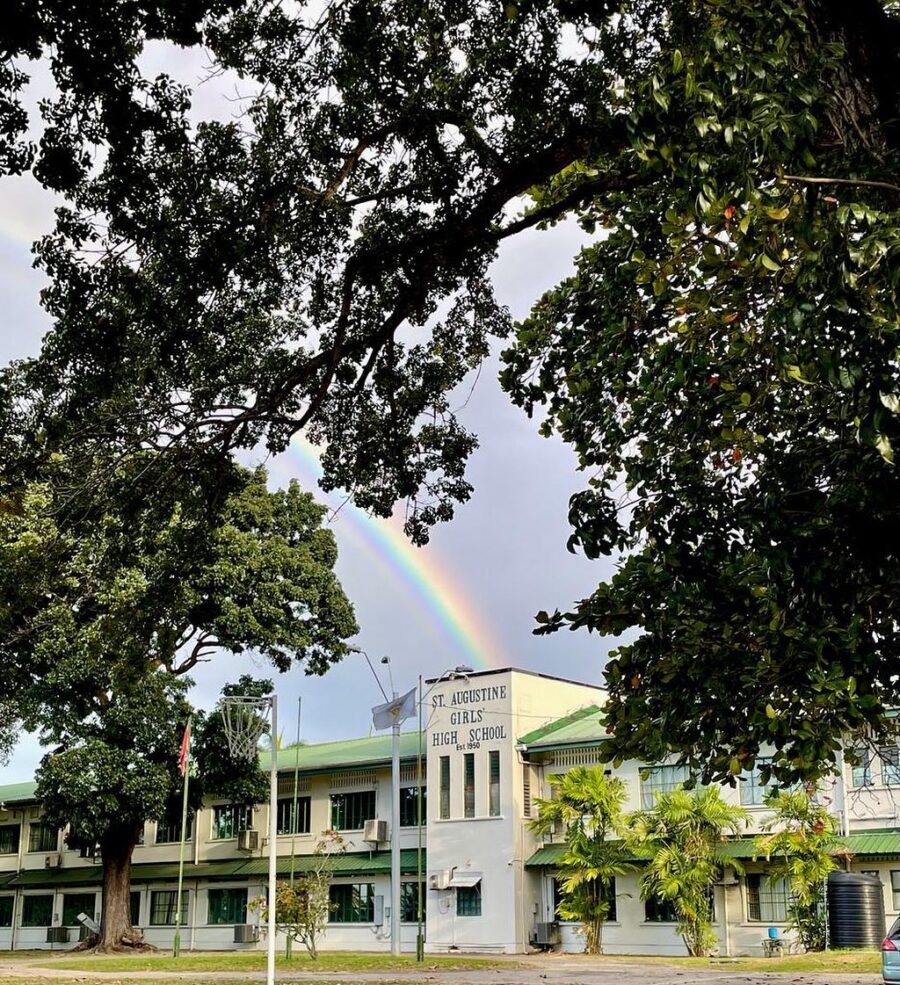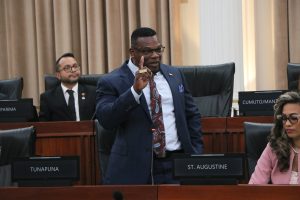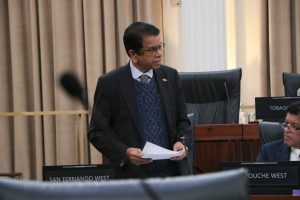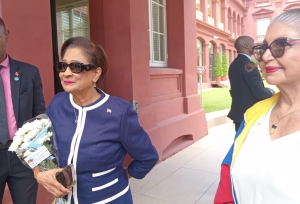
ON 19 September 1950, a secondary school accommodating 59 girls in North Trinidad began at the Practice College of the Archibald Institute building on Austin Street in St Augustine.
Subsequently, in January 1951 the school moved to a two-storeyed house at the corner of the Eastern Main Road and Austin Street.
The Presbyterian Church was fortunate to later obtain 14 acres of leased land from Caroni Limited. The land was located to the North of the Churchill Roosevelt Highway. This would be the future site of the iconic St Augustine Girls’ High School (SAGHS).
Miss Beattie was the Principal but Vice-Principal Constance Wagar unofficially took over leadership duties in January 1952. This strategy was to allow Beattie to be involved in the construction of a new school. On 12 May 1953, newly-installed acting Principal Wagar, the staff and school population dedicated the new building on its current site. Part of the dedication ceremony was a prayer offered by the Moderator of the Presbyterian Church Rev James Sieunarine.
A few months later in the year, in September, Wagar was appointed Principal and Undine Giuseppi was Vice-Principal. Giuseppi, one of the first teachers at SAGHS, briefly served as music teacher and trained the school’s choir. In December 1951, the choir was invited to Radio Trinidad where their carols and choral readings were broadcast to the nation. Soon SAGHS was a regular contestant in the annual Music Festivals. In 1953, Giuseppi also supervised the publication of the school’s first magazine The Augustinian.
By 1962, Rev Seunarine had been appointed to Naparima College and Anna Mahase to SAGHS. Earlier, in 1953, Mahase had been awarded a Women’s Missionary Society (WMS) scholarship to pursue a degree at Mt Allison University. Mahase, a graduate of Naparima Girls’ High School (NGHS), holds the unique distinction of being the youngest person to serve as principal of a denominational secondary school in T&T.
At SAGHS during the 1950s, a reformation in music was unfolding. On February 1, 1956, Lenore Mahase, a graduate of NGHS and McGill University, joined the staff of SAGHS as a music teacher. Mahase continued the work of Giuseppi who was now able to concentrate on other areas such as public speaking, choral speaking and recitation. Additionally, Giuseppi was instrumental in training students for the Junior Arts Festival.
One of the early features of SAGHS was the dormitory for girls who did not reside nearby. This residence was known as The Dorm and provided a comfortable environment to nurture their physical and mental development. Deidre Prabha Nancoo, a former dorm girl, who attended SAGHS during 1956 to 1961, reflected on the significance of the residence, “The demographic diversity of the dorm impelled us to become more tolerant, accepting and, indeed, appreciative of each other’s individuality. Growing up in this, one might say, embryonic global village gave us the skills and confidence to flourish in whatever corner of the globe our destiny decreed.”
Giuseppi, in her autobiography, praised the teaching environment which existed at the school: “Over the years, the staff comprised members who were Anglicans, Presbyterians, Roman Catholics and Hindus, and there had been no difference whatsoever in the treatment which any of us had received from the administration because of the difference in our religion. Presbyterians were given no preferential treatment.”
This evidence from a stalwart of SAGHS provided evidence that a non-Presbyterian could hold the influential post of vice-principal and that the staff were hired on the basis of merit and talent rather than religion or ethnicity. By 1970, the staff had 28 dynamic teachers including ladies as Margaret Cipriani, Gemma Waithe, Cheryl Henry, Vera Warner and Jennifer Benjamin.
In 1959, noteworthy academic successes were recorded at SAGHS, as 56 of the 60 candidates passed the Senior Cambridge exams and three of the four students attempting the Higher School Certificate were successful. In this year, the enrollment of the school was 405 students. In the Principal’s Report of 1969-1970, Mahase stated that the school’s enrollment was 600. Of the 22 students who sat A’Levels, 18 gained one to three subject passes (excluding General Paper) and there were 100% passes in English Literature
In 1964, SAGHS became the first secondary school in Trinidad and Tobago to celebrate Carnival. By 1970, the school had various clubs and societies such as the Scientific Society, Handicraft Society, First Aid, Instrumental Group and the Modern Languages Society. At SAGHS its highly acclaimed performance has been attributed to a combination of quality teaching, industrious students and inspirational leadership.
Dr Jerome Teelucksingh is an activist. He initiated the inaugural observances of International Day for the Elimination of Violence Against Men and Boys (January 31) and World Day of the Boy Child (May 16). He has made academic presentations at tertiary institutions including Harvard University and Oxford University.
See other articles by Dr Jerome Teelucksingh on AZP News:
Defining Caribbean Masculinity
Is Monogamy Encouraged in the Caribbean
Naps Girls: From Humble Beginnings to Excellence
US Media Creates Cultural Dependency in the Caribbean
Bloodless Revolution to Save Lives in Developing Countries
The Need for a Social and Moral Revolution
The Law of Supply and Demand in Developing Countries
End the Dependency for Developing Countries
T&T Carnival and the Emperor’s New Clothes
The Influence of Labour on Caribbean Integration
The illusion of political Unity
Presbyterians in Trinidad: Humble Missionaries, Local Workers
Religious Plurality: Curse or Blessing
Caribbean Youth Need Optimism, Patriotism
Rethinking Identities in Caribbean, Latin America
November 19: All Inclusive International Men’s Day
Should International Agencies be Blamed for Unemployment
A Need to Observe Word Unemployment Day
An Ideology for the Trade Union Movement
The Man who Couldn’t be Prime Minister
Social Outburst vs Social Revolution
Challenges of the Men’s Movement
If George Floyd was Denied Parole
The Meaning of Indian Arrival Day in T&T
International Men’s Day – A Way of Life
Wounds that cause school violence
May Day: A Time for Solidarity, Strength
Who Coined the Term ‘Black Power’
The illusion of political Unity
Presbyterians in Trinidad: Humble Missionaries, Local Workers
Religious Plurality: Curse or Blessing
Caribbean Youth Need Optimism, Patriotism
Rethinking Identities in Caribbean, Latin America
November 19: All Inclusive International Men’s Day
Should International Agencies be Blamed for Unemployment
A Need to Observe Word Unemployment Day
An Ideology for the Trade Union Movement
The Man who Couldn’t be Prime Minister
Social Outburst vs Social Revolution
Challenges of the Men’s Movement
If George Floyd was Denied Parole
The Meaning of Indian Arrival Day in T&T
International Men’s Day – A Way of Life
Wounds that cause school violence
May Day: A Time for Solidarity, Strength
Who Coined the Term ‘Black Power’
![]()














Nalini theresa singh
August 14, 2023I don’t think that I was even aware of this history for the best 7 years of my life.